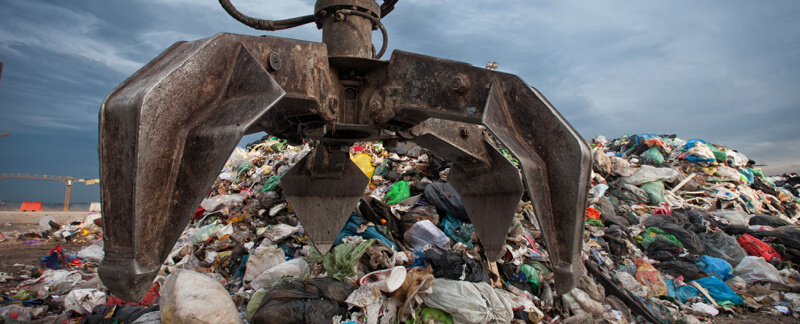
Waste Management in the UAE
A new high-tech waste to energy (WTE) facility in Sharjah is to come on-line by 2020. Managed by the Emirates Waste to Energy Company (a joint venture between Masdar and Bee’ah) it will be capable of processing approximately 300,000 tonnes of waste per year and will generate up to 30MW of energy.
Located within Bee’ah’s Waste Management Centre in Sharjah, the facility will process more than 37.5 tonnes of municipal solid waste (MSW) per hour to generate electricity in a way that will contribute significantly to reaching the UAE’s target of diverting 75 per cent of its solid waste from landfills by 2021, as well as Sharjah’s zero-waste-to-landfill goal.
But beyond meeting targets what will be the potential benefits of this new waste facility to Sharjah and the UAE?
Sustainability
The term ‘Sustainable Development’ was defined within the so-called ‘Brundtland Report’ (after the Chair of the Committee) as “Development which meets the needs of the present without compromising the ability of future generations to meet their own needs” . In other words we must manage resources in a way that does not impact on the health of planet Earth for future generations. To do this requires that we strike a balance between environmental, social and economic considerations.
However, there is no no-risk waste management option (even waste prevention can lead to job losses and associated negative social impacts) and therefore when considering sustainable waste management options we are required to consider those that pose the least risk and the most benefit to both people and the environment.
Municipal Solid Waste is comprised of a range of waste materials that vary from country to country and region to region, according to local practices and customs; it will almost always comprise a mix of organic and inorganic material, some of which can have economic value, such as components of Waste Electrical and Electronic Equipment (WEEE). When this material is disposed to landfill, the valuable components will be lost to the ‘chain of utility’, while much of the organic fraction has potential to decompose to release polluting gases (landfill gas) and liquids (leachate) that have potential to harm both human health and the environment. These pollutants are produced as a consequence of biological degradation processes in a way that varies with local environmental conditions such as temperature, moisture content and pH and which therefore, are dependent upon local climatic conditions.
A major component of landfill gas is methane, and methane is approximately 25 times more damaging as a greenhouse gas than carbon dioxide and unless very efficient gas control measures are put in place then much of this methane will escape to the atmosphere. In practice this is very difficult to achieve.
The WTE plant is effectively a high-temperature thermal oxidiser and therefore, when the same wastes are burned in a WTE plant (incinerator) then no methane is produced and instead most of the carbon (according to plant efficiency) within the waste is converted to carbon dioxide. The carbon dioxide emissions are not without any environmental impact, but that impact is much reduced when compared to the release of methane from landfill.
Furthermore, when used in conjunction with an effective system of waste collection and sorting, then much of the valuable material such as components within WEEE can be separated for recycling. This has the added advantage of reducing low CV (Calorific Value) elements within the waste and thus increasing the overall CV of the waste used in the conversion to energy, while also reducing metallic components that may be difficult to remove from the gaseous emissions within the emissions control element of the WTE facility.
From the above it is evident that the new WTE plant will facilitate much more sustainable management of wastes within UAE when compared to current landfill processes.
A Renewable Source of Energy
Because some of the material that is burned in a WTE plant is considered to be ‘renewable’ (e.g. wood from sustainable forestry, paper from the same, fabric from cotton) the energy that is generated is considered to be more sustainable than that from other combustion energy sources; in generating 30MW electricity from the new WTE plant it will mean that less fossil-fuel is burned for energy supply and again, in this way, is a more sustainable option.
Hazard Reduction
Waste to Energy plants operate at very high temperatures (~1,100 OC) and at these temperatures, complex and potentially toxic compounds within waste streams are broken down into their component atoms which are then oxidised as part of the chemical (thermal oxidation) process. This leads to a reduction in pollution potential via the process of hazard reduction. While dioxins and furans can in theory instantaneously reform within the WTE plant, this potential is recognised and the process managed to control this.
Summary
The development of a new WTE facility in Sharjah represents a big step forward in sustainable waste management within UAE, while helping the Emirate and the United Emirates as a whole, to meet waste management / diversion targets.
1World Commission on Environment and Development (1987) Report of the World Commission on Environment and Development: Our Common Future
About the Author
Dr. Ken Westlake
Dr. Ken Westlake is a leading waste management trainer, having trained more than 4000 participants globally. In the UK this has included organizations such as the Environment Agency (the biological treatment of waste), BMW (compliance with waste management legislation), and Nottinghamshire County Council (waste management audits).
As a consultant he has worked in North and South America, Africa, Asia, Europe and the Middle East on topics ranging from Expert Witness work in Court and the management of healthcare waste (both UK) to sustainable hazardous waste management in India and waste masterplan development for the Ministry of Regional Municipalities and Environment in Oman. This work has adopted a risk-based approach to advice on legal compliance as well as technical support to a range of waste management activities including composting and landfill development projects.
He has authored more than 40 publications and has contributed to a number of waste management books. More recent publications include the use of waste management as a mechanism for governance reform in Nigeria, as well as a book on sustainable landfill.
Related Blogs

Back to Nature
I suppose everyone will agree with me, even though my theory is not supported with numbers, that lately, the hours spent in front of screens, whether smart devices, laptops, or TVs, has increased tremendously....

Corona: Fight or Fright
The COVID-19 pandemic brings numerous concerns for humanity. With a few exceptions, all businesses are suffering from this virus that has crippled almost everything. However, the question for which I couldn’t...

Turning the Credit and Collections Department into a Profit Earning Function
Below is a real-life case study by Jon Ray MICM. A few years ago, I was doing some consultancy work for one of the big European banks. This institution had some i...

The Wastes Management Hierarchy and The Circular Economy
For many in business, wastes that are produced are simply an overhead that must be accounted for and are a drain on profits; there is a fundamental acceptance that waste is inevitable! However ...